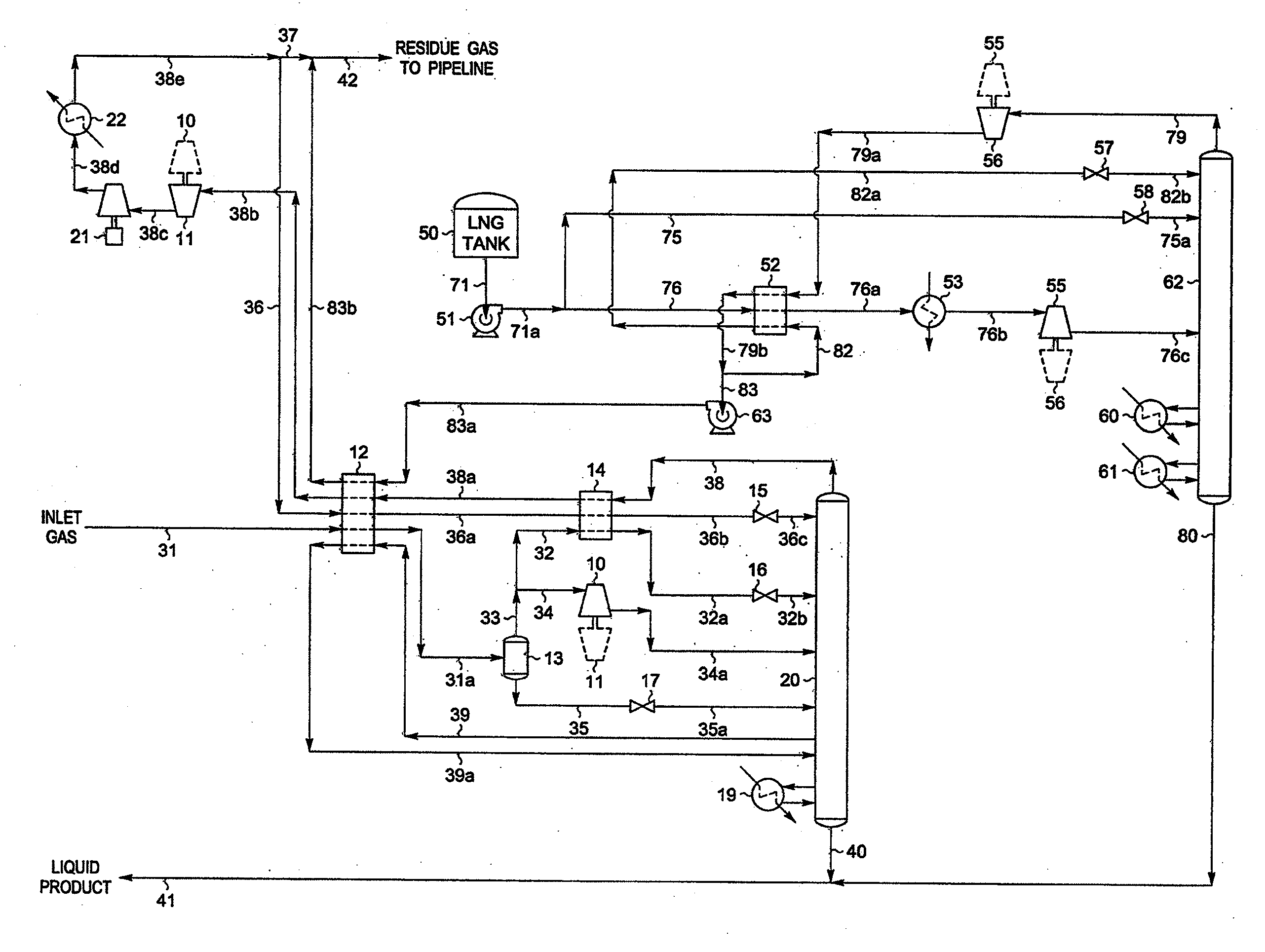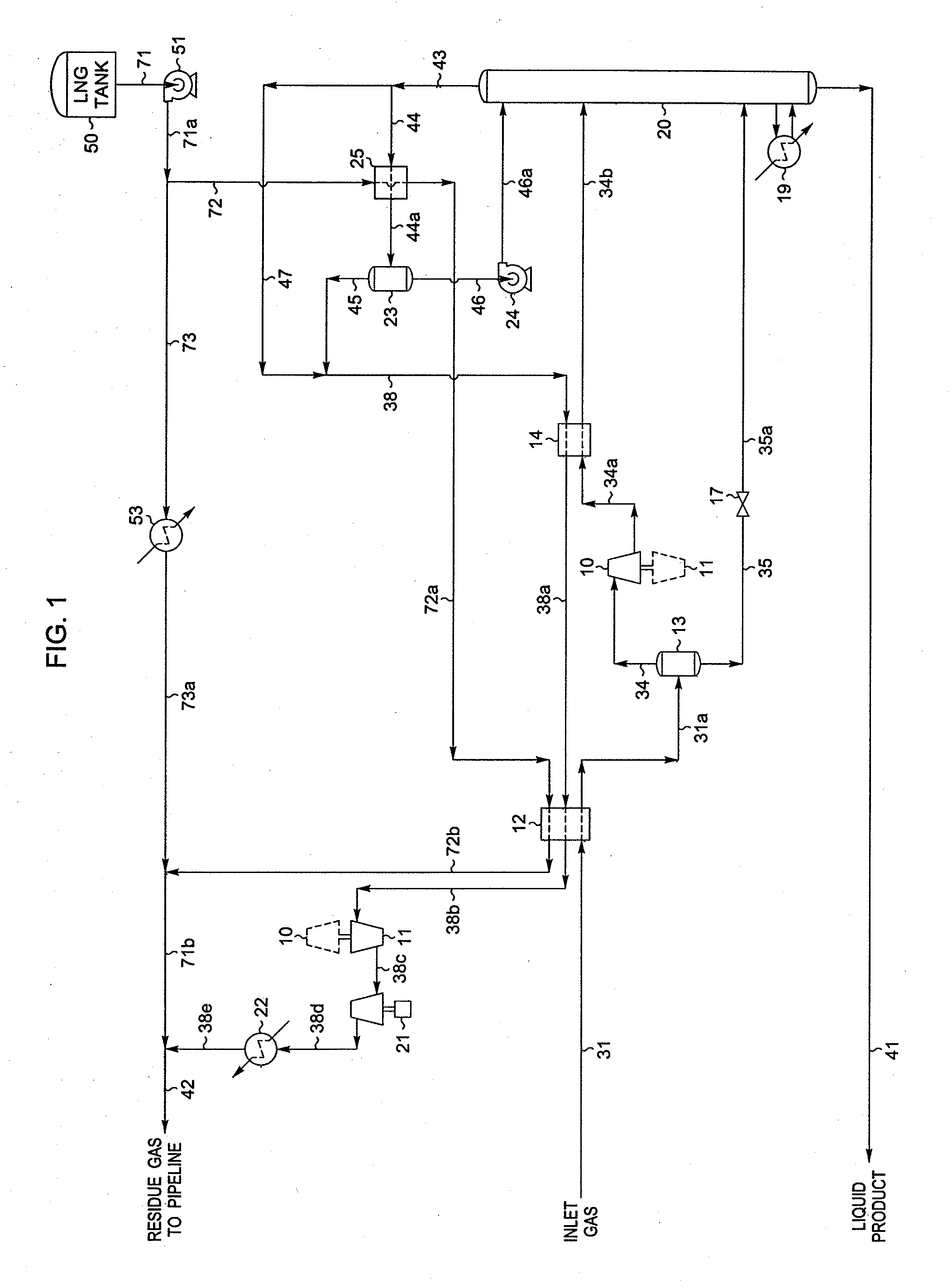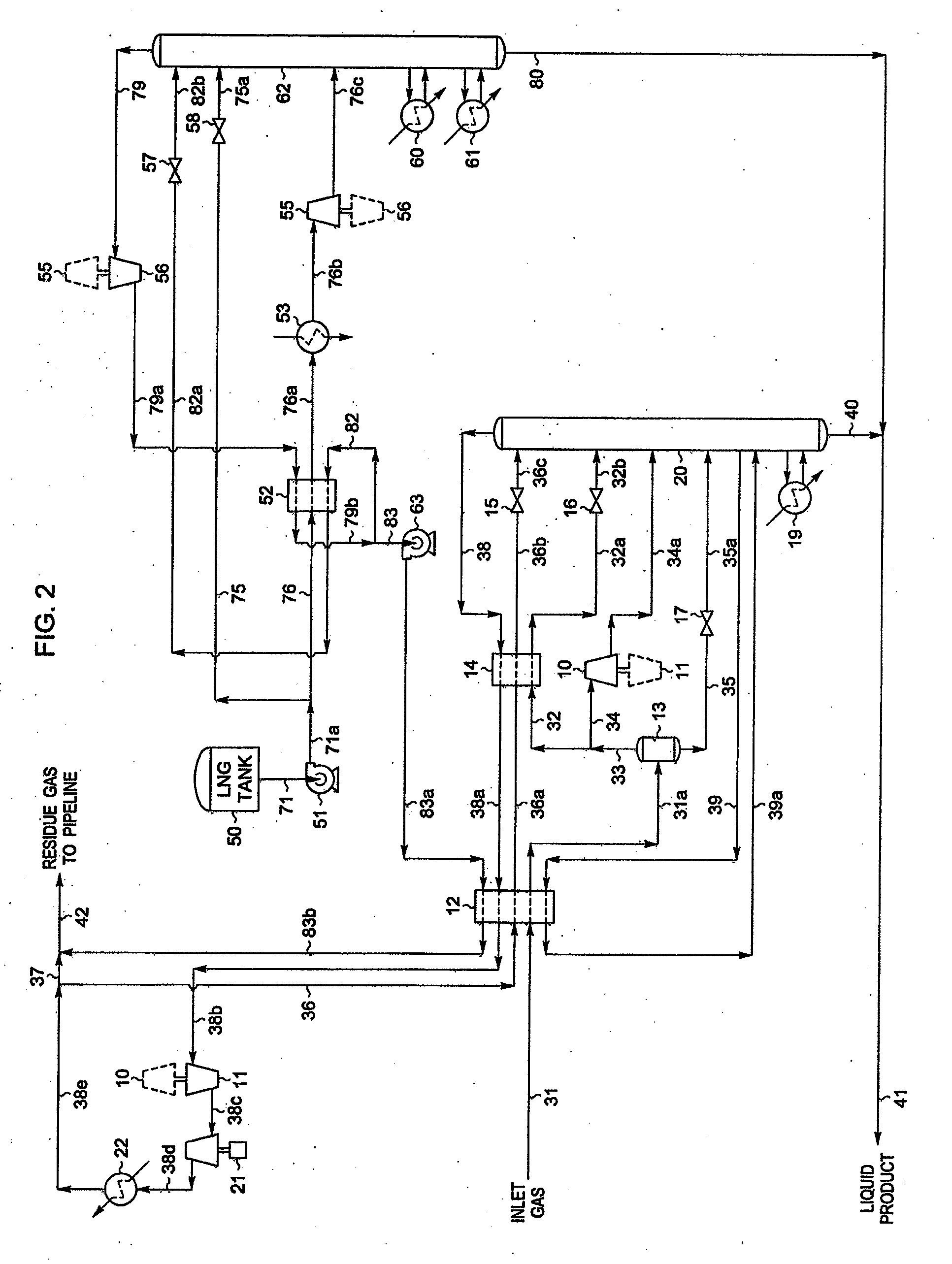Liquefied Natural Gas and Hydrocarbon Gas Processing
a technology of hydrocarbon gas and natural gas, applied in the direction of refrigeration and liquidation, lighting and heating apparatus, solidification, etc., can solve the problems of high recovery, low utility cost, and process simplicity, so as to achieve low capital investment and reduce utility costs
- Summary
- Abstract
- Description
- Claims
- Application Information
AI Technical Summary
Benefits of technology
Problems solved by technology
Method used
Image
Examples
example 1
[0040]FIG. 3 illustrates a flow diagram of a process in accordance with the present invention. The LNG stream and inlet gas stream compositions and conditions considered in the process presented in FIG. 3 are the same as those in the FIG. 1 and FIG. 2 processes. Accordingly, the FIG. 3 process can be compared with the FIG. 1 and FIG. 2 processes to illustrate the advantages of the present invention.
[0041]In the simulation of the FIG. 3 process, the LNG to be processed (stream 71) from LNG tank 50 enters pump 51 at −251° F. [−157° C.]. Pump 51 elevates the pressure of the LNG sufficiently so that it can flow through heat exchangers and thence to separator 54. Stream 71a exits the pump at −242° F. [−152° C.] and 1364 psia [9,401 kPa(a)] and is split into two portions, streams 72 and 73. The first portion, stream 72, becomes stream 75 and is expanded to the operating pressure (approximately 415 psia [2,859 kPa(a)]) of fractionation column 62 by expansion valve 58. The expanded stream 7...
example 2
[0058]An alternative method of processing natural gas is shown in another embodiment of the present invention as illustrated in FIG. 4. The LNG stream and inlet gas stream compositions and conditions considered in the process presented in FIG. 4 are the same as those in FIGS. 1 through 3. Accordingly, the FIG. 4 process can be compared with the FIGS. 1 and 2 processes to illustrate the advantages of the present invention, and can likewise be compared to the embodiment displayed in FIG. 3.
[0059]In the simulation of the FIG. 4 process, the LNG to be processed (stream 71) from LNG tank 50 enters pump 51 at −251° F. [−157° C.]. Pump 51 elevates the pressure of the LNG sufficiently so that it can flow through heat exchangers and thence to separator 54. Stream 71a exits the pump at −242° F. [−152° C.] and 1364 psia [9,401 kPa(a)] and is split into two portions, streams 72 and 73. The first portion, stream 72, becomes stream 75 and is expanded to the operating pressure (approximately 415 p...
example 3
[0070]Another alternative method of processing natural gas is shown in the embodiment of the present invention as illustrated in FIG. 5. The LNG stream and inlet gas stream compositions and conditions considered in the process presented in FIG. 5 are the same as those in FIGS. 1 through 4. Accordingly, the FIG. 5 process can be compared with the FIGS. 1 and 2 processes to illustrate the advantages of the present invention, and can likewise be compared to the embodiments displayed in FIGS. 3 and 4.
[0071]In the simulation of the FIG. 5 process, the LNG to be processed (stream 71) from LNG tank 50 enters pump 51 at −251° F. [−157° C.]. Pump 51 elevates the pressure of the LNG sufficiently so that it can flow through heat exchangers and thence to separator 54. Stream 71a exits the pump at −242° F. [−152° C.] and 1364 psia [9,401 kPa(a)] and is split into two portions, streams 72 and 73. The first portion, stream 72, becomes stream 75 and is expanded to the operating pressure (approximat...
PUM
 Login to View More
Login to View More Abstract
Description
Claims
Application Information
 Login to View More
Login to View More - R&D
- Intellectual Property
- Life Sciences
- Materials
- Tech Scout
- Unparalleled Data Quality
- Higher Quality Content
- 60% Fewer Hallucinations
Browse by: Latest US Patents, China's latest patents, Technical Efficacy Thesaurus, Application Domain, Technology Topic, Popular Technical Reports.
© 2025 PatSnap. All rights reserved.Legal|Privacy policy|Modern Slavery Act Transparency Statement|Sitemap|About US| Contact US: help@patsnap.com



